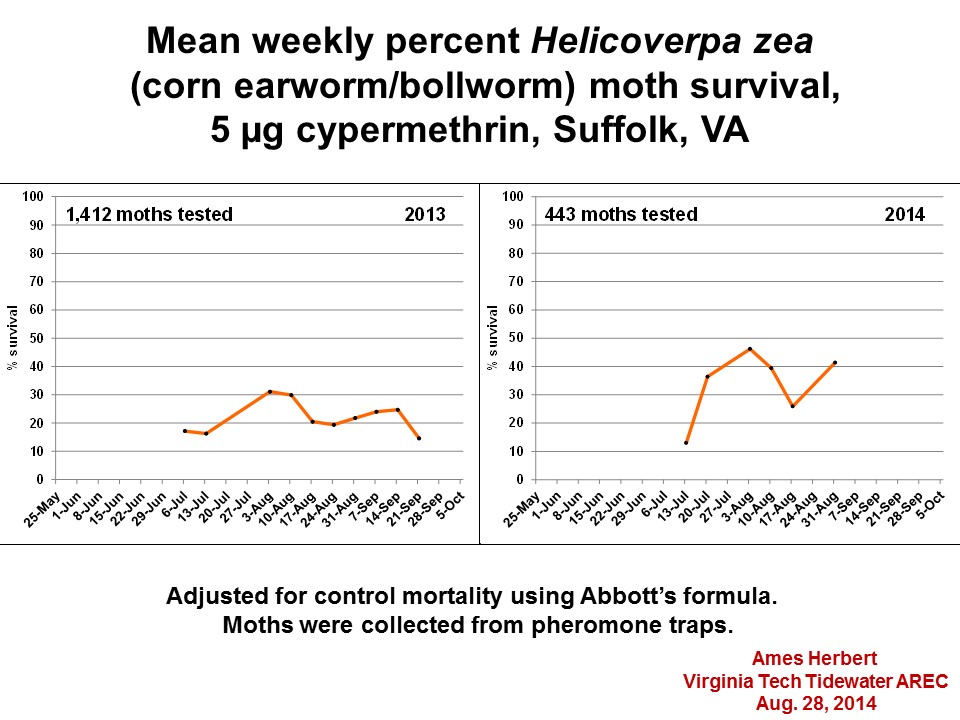Although we hear rumors of worms in soybean fields, our scouting does not confirm this. We are finding almost none in either full season or double crop fields—and others are reporting the same. The full season crop is quickly approaching the ‘safe’ zone, that is, the point where pods are too tough to be attractive to insect pests. But, the summer is not over yet. Because corn is slow to dry down this year, we may still see a corn earworm moth flight into soybean fields, and if this happens, double crop fields would be a primary target. This is also true for stink bugs. As we get into late summer and early fall, stink bugs will be attracted to double crop fields. We strongly recommend that you begin checking double crop fields.
Because of the very weak corn earworm moth flight, we have not been able to capture and test nearly as many moths for pyrethroid tolerance as we have in the past. But all indications are that levels are high (see the graph below). In the most recent sample more than 40% survived the vial challenge. If this high pyrethroid tolerance level coincided with a large flight the large numbers of worms in fields, we would no question be recommending non-pyrethroids. But with this weak flight and the low numbers of worms in fields, I think we can get decent enough control with high rates of pyrethroids, alone.

